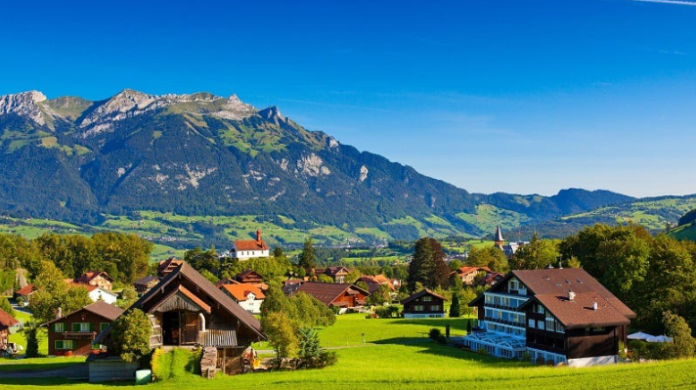Casteò is a term that often sparks curiosity and concern. It refers to a complex social system that has shaped societies in various ways. This article aims to provide a comprehensive overview of Casteò, exploring its origins, structure, and the impact it has on social dynamics.
What is Casteò?
Casteò is a social hierarchy system where people are divided into different groups based on birth, occupation, and social status. This system has been prevalent in various cultures and has significantly influenced social interactions and opportunities.
Origins of Casteò
The origins of Casteò can be traced back to ancient civilizations. Historical evidence suggests that caste systems were established to organize society and distribute labor. Over time, these systems became more rigid, leading to significant social stratification.
Structure of Casteò
Casteò is typically structured in a hierarchical manner. At the top are the privileged classes, who hold power and resources. Below them are various other classes, each with specific roles and responsibilities. The lowest classes often face the most severe forms of discrimination and social exclusion.
The Impact of Casteò on Society
Casteò has far-reaching implications for individuals and communities. It affects access to education, employment, and social mobility. Understanding these impacts is crucial to addressing the inequalities perpetuated by this system.
Education and Casteò
Education is a key area where the effects of Casteò are evident. In many societies with caste systems, access to quality education is often restricted for lower castes. This perpetuates a cycle of poverty and limited opportunities.
Employment and Casteò
Similarly, employment opportunities are often influenced by caste. Higher castes tend to have better access to lucrative jobs, while lower castes are confined to less desirable occupations. This further entrenches economic disparities.
Social Mobility and Casteò
Social mobility, or the ability to move up the social ladder, is severely restricted in caste-based societies. The rigid structure of Casteò means that individuals are often confined to the social status of their birth, making it difficult to improve their circumstances.
Discrimination and Casteò
Discrimination is a pervasive issue in caste-based systems. Individuals from lower castes often face prejudice and exclusion in various aspects of life. Addressing this discrimination is essential for creating a more equitable society.
Forms of Discrimination
Discrimination can take many forms, from overt acts of violence to subtle biases in everyday interactions. It can occur in education, employment, healthcare, and social settings, affecting the overall well-being of individuals from lower castes.
Legal and Social Reforms
Efforts to combat caste-based discrimination have included both legal and social reforms. Laws against discrimination, affirmative action policies, and awareness campaigns are some of the measures taken to address these issues.
The Role of Technology in Addressing Casteò
Technology has the potential to play a significant role in addressing the challenges posed by Casteò. From improving access to education to providing platforms for social activism, technology can be a powerful tool for change.
Access to Education
Online education platforms can help bridge the gap in access to quality education for lower castes. By providing resources and opportunities for learning, technology can empower individuals to break free from the constraints of Casteò.
Social Activism
Social media and other online platforms provide a voice for marginalized communities. They can be used to raise awareness, mobilize support, and advocate for change. This can help challenge the status quo and promote a more inclusive society.
Global Perspectives on Casteò
Caste-based systems are not limited to any one region or culture. Various societies around the world have their own versions of caste, each with unique characteristics and challenges.
Casteò in South Asia
In South Asia, particularly in India, the caste system has deep historical roots and continues to influence social dynamics. Efforts to dismantle this system have been ongoing, but significant challenges remain.
Casteò in Other Regions
Other regions, such as Africa and parts of the Middle East, also have caste-like systems. These systems similarly affect social interactions and opportunities, highlighting the global relevance of understanding and addressing Casteò.
Moving Towards an Inclusive Society
Creating a more inclusive society requires a multi-faceted approach. It involves not only addressing the immediate impacts of Casteò but also challenging the underlying beliefs and structures that perpetuate it.
Education and Awareness
Education and awareness are crucial in changing mindsets and promoting equality. By educating people about the harms of caste-based discrimination and promoting values of inclusivity, we can work towards a more equitable society.
Policy and Advocacy
Effective policies and advocacy are essential in driving systemic change. This includes enforcing anti-discrimination laws, promoting affirmative action, and supporting initiatives that empower marginalized communities.
Community Engagement
Engaging with communities is vital in addressing the impacts of Casteò. Community-led initiatives can provide support, raise awareness, and drive change from the ground up.
Conclusion
Casteò is a complex and deeply rooted social system that has significant implications for individuals and societies. Understanding its origins, structure, and impacts is crucial for addressing the inequalities it perpetuates. By leveraging technology, promoting education and awareness, and advocating for effective policies, we can work towards a more inclusive and equitable society.
By understanding the nuances of Casteò and taking proactive steps to address its impacts, we can create a world where everyone has the opportunity to thrive, regardless of their social status.
Read Also-: Stichting Bouwresearch: Excellence in Construction Research








